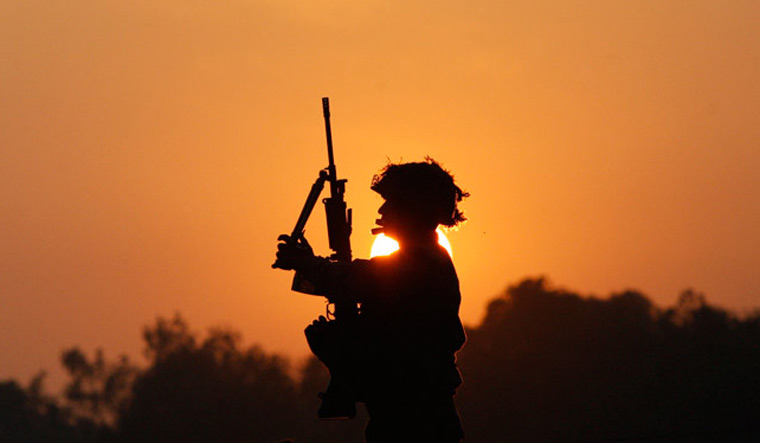As Covid-19 pandemic halted the Army's recruitment for over two years, the Army headquarters has asked its training centres to cut down their manpower by 25 per cent. Surprisingly, the move came at a time when the Army is coming out with its new recruitment policy of Tour on Duty.
"As there is negligible training taking place in the last two years, all regimental centres are to be manned at 75 per cent of its authorised manpower at the levels of naik and below," a directive from the Army headquarters to all 46 regimental centres said. However, it added that once the recruitment process recommences, strength may be built up accordingly.
The Army headquarters further stated that all combatant manpower attached with regimental centres and record offices would be reverted to their parent units forthwith. The Army plans to deploy these combatants on the border areas and also for counter-terrorism operations.
The Army headquarters' move is already facing opposition from the regimental training centres. They have expressed their inability to reduce manpower since their staff is engaged in multiple internal security duties. Moreover, training centres are already short-staffed and the officers' strength has come down to half. They, however, have agreed to reduce the numbers of instructors till fresh recruitment starts.
The reduction of manpower in training centres comes at a time when the Army is gearing up to restart the recruitment process under the new Tour of Duty (ToD) scheme. If everything goes well, the Army is planning to open its recruitment by September.
In a first of its kind model, under ToD, the Army is recruiting civilians into three services of the armed forces for four years. They will recruit undergraduate men, aged 18 to 21, on a contract basis with no scope for promotion. The four-year stint will have around six months of training, and salary and perks would be almost at par with existing personnel.
The aim is to make the military lean and mean—to reduce the pension bill (for FY 2022-2023, this is Rs 1.2 lakh crore of the Rs 5.25 lakh crore defence budget) and to assemble younger forces. For example, the average age of an infantryman is 35-36. With ToD, this is expected to drop to 25-26 in five years.
The announcement of ToD may happen soon. In the first phase, 45,000 youth will be recruited and after four years of service, only 25 per cent will be considered for full service after a fresh screening. The Army is proposing to have a professional degree or diploma for all the recruits besides military training. A professional degree or diploma would help recruits in their second career post completion of four years of stints.
In 2019-2020, the Army recruited 80,572 jawans; there has been no entry since then. This has left 46 regimental training centres with no fresh batches. On the other hand, the Indian Navy and the Indian Air Force have both recruited in the last two years 8,269 and over 13,000 personnel, respectively.
Military observers believe that the idea of having soldiers for four years does not tally with the cost of training. The Navy spends around Rs 27 lakh per cadet, the IAF 39 lakh and the Army close to Rs 16 lakh.





